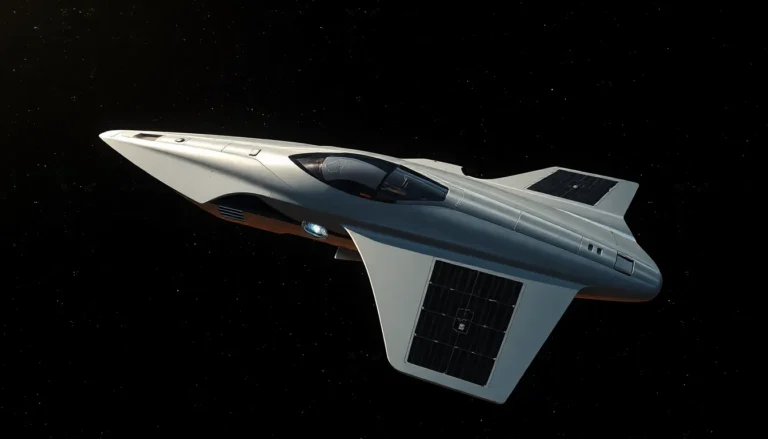Table of Contents
ToggleIn the thrilling world of space exploration, launch vehicle integration is the unsung hero that gets rockets off the ground and into the cosmos. Think of it as the ultimate team-building exercise, where every component— from the rocket boosters to the payload— must work in perfect harmony. It’s a complex dance where precision meets creativity, and one misstep could lead to a spectacular fireworks show, just not the kind anyone wants to see.
As the demand for space missions skyrockets, mastering this intricate process becomes crucial. Whether it’s a satellite deployment or a crewed mission, understanding launch vehicle integration isn’t just for rocket scientists; it’s for anyone who dreams of reaching for the stars. Buckle up as we dive into the nitty-gritty of this essential process, ensuring that the next time you look up at the night sky, you appreciate the orchestration that made it all possible.
Overview of Launch Vehicle Integration
Launch vehicle integration refers to the process of assembling and preparing various components of a rocket to ensure it functions correctly. This complex endeavor involves meticulous attention to detail, as successful missions depend on precise execution.
Definition and Importance
Launch vehicle integration involves the systematic assembly of rocket components. It encompasses activities such as installing payloads, connecting propulsion systems, and ensuring instrumentation functions. The importance of this process cannot be overstated; seamless integration directly impacts mission success. As more organizations pursue space exploration, understanding this process becomes essential for stakeholders and enthusiasts alike.
Key Components
Key components of launch vehicle integration include propulsion systems, payload systems, and avionics. Propulsion systems provide the necessary thrust to escape Earth’s gravity. Payload systems house satellites or scientific instruments, ensuring their secure transport to orbit. Avionics manage navigation and communication, enabling real-time data transfer. Each element plays a pivotal role, and failure in any area can jeopardize the entire mission.
The Integration Process
The integration process ensures that all rocket components work seamlessly together. It involves multiple stages to achieve optimal performance.
Stages of Vehicle Integration
Each stage of vehicle integration plays a crucial role. Initial assembly involves connecting major structures, such as the rocket body and payload. Next, integration of propulsion systems occurs, ensuring engines align precisely. Following this step, avionics systems get installed. These systems enable communication and control throughout the mission. Final checks form the last stage, confirming all components operate correctly before launch. Successful integration hinges on meticulous attention to detail in each phase.
Challenges in Integration
Several challenges arise during the integration process. Coordinating various teams can complicate the workflow. Engineers face difficulties in managing timelines, especially with numerous components involved. Technical issues may occur, affecting compatibility among systems. Environmental concerns, such as temperature and humidity, also pose significant risks. Additionally, recent trends toward rapid launches pressure teams to streamline integration without compromising safety. Successful navigation of these challenges is essential for mission success.
Technologies Used in Integration
Technologies play a vital role in launch vehicle integration, ensuring all components function seamlessly together. From software tools to hardware solutions, these innovations enhance precision and efficiency.
Advanced Software Tools
Software tools revolutionize how integration tasks are executed. They provide capabilities for modeling, simulation, and analysis, allowing teams to predict and address potential issues before they arise. Software like NASA’s Systems Tool Kit or SpaceX’s custom applications streamline data management and improve decision-making processes. Enhanced visualization features aid engineers in comprehending complex systems. Moreover, real-time monitoring software enables tracking of component performance throughout the integration process.
Hardware Considerations
Hardware factors greatly influence the effectiveness of integration. Structural integrity of components is critical, requiring rigorous testing protocols. Integration teams utilize specialized fixtures and equipment to facilitate accurate assembly. Testing rigs simulate launch conditions to identify weaknesses early in the process. Additionally, compatibility among hardware elements ensures systems can operate in unison. Attention to materials and manufacturing quality directly affects the reliability of components, contributing significantly to mission success.
Best Practices for Successful Integration
Successful launch vehicle integration requires strategic planning and precise execution. Implementing best practices can significantly enhance the integration process.
Planning and Coordination
Effective planning and coordination form the backbone of successful integration. Integrating timelines requires collaboration between various teams including engineering, manufacturing, and project management. Clear communication channels must exist to facilitate information sharing. Creating a detailed project timeline allows for the identification of key milestones and dependencies. Meetings can establish progress updates and address potential issues as they arise. Recognizing the need for flexibility in the schedule ensures adaptation to unforeseen challenges. Ultimately, a cohesive approach leads to more streamlined integration and minimizes delays.
Testing and Validation
Thorough testing and validation enhance confidence in launch vehicle performance. Each component must undergo rigorous testing to ensure functionality. Performing subsystem tests confirms that individual systems operate correctly before full-scale integration. Conducting integration tests evaluates the interaction between components, identifying any compatibility concerns. Implementing simulations can assist in predicting potential issues during launch. Validation processes validate that all technical specifications and safety requirements are met. Documenting test results provides essential data for continuous improvement. By prioritizing thorough testing, teams bolster the reliability and success of launch missions.
Future Trends in Launch Vehicle Integration
Rapid advancements in launch vehicle integration are transforming space exploration. New technologies emerge continuously to enhance efficiency and effectiveness in integration processes.
Innovations on the Horizon
Emerging automation tools streamline assembly tasks, increasing speed while minimizing human error. Artificial intelligence algorithms analyze integration data, predicting potential issues before they arise. Additive manufacturing techniques are revolutionizing component fabrication, allowing for lighter and more resilient parts. Modular designs offer flexibility in configurations, enabling quicker integration of payloads. Overall, these innovations position the industry for more frequent and reliable launch opportunities.
Impact of Commercial Spaceflight
Commercial spaceflight companies change the landscape of launch vehicle integration. Increased competition drives rapid advancements, pushing companies to adopt best practices to reduce costs. Integration processes become more efficient as companies focus on shorter timelines and reliable launch schedules. New partnerships form between commercial entities and governmental agencies, blending expertise to enhance mission outcomes. As more stakeholders enter the space sector, streamlined integration becomes essential for meeting the growing demand for satellite deployments and interplanetary missions.
Conclusion
Launch vehicle integration is a cornerstone of successful space missions. As the demand for space exploration grows, the importance of meticulous assembly and coordination among various components becomes increasingly evident. The integration process not only requires technical expertise but also effective communication and strategic planning.
Emerging technologies and innovative practices are reshaping how teams approach integration. By embracing automation and modular designs, organizations can enhance efficiency while maintaining safety. As the landscape of space exploration evolves, understanding and improving launch vehicle integration will be essential for achieving ambitious goals and ensuring mission success.







